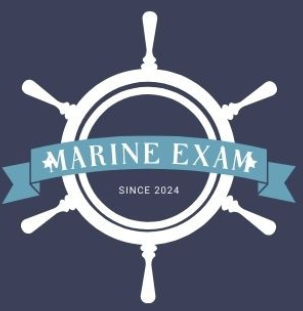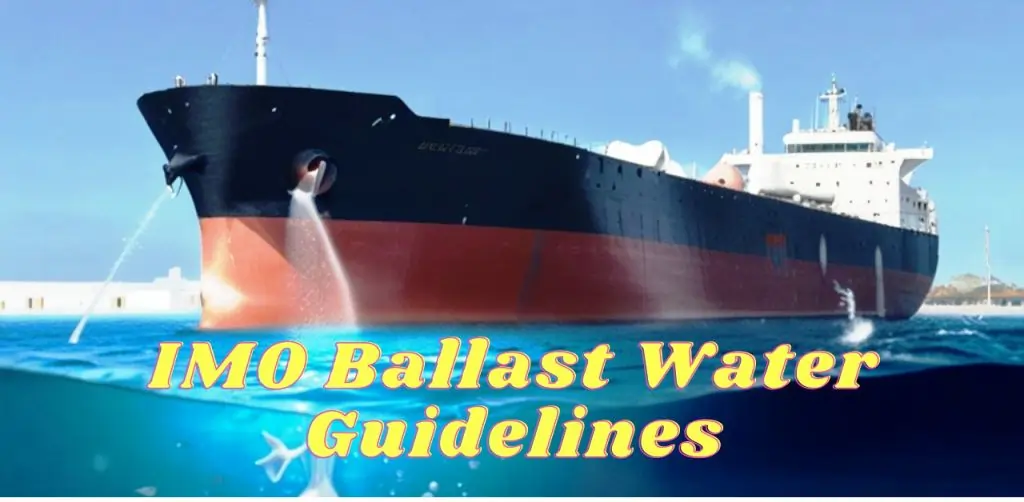The International Maritime Organization (IMO) plays a crucial role in safeguarding the marine environment, and the Ballast Water Guidelines are at the heart of its efforts to prevent the spread of invasive species. These guidelines are vital for protecting ecosystems and ensuring sustainable shipping practices. In March 2024, the IMO’s Marine Environmental Protection Committee (MEPC) adopted Resolution MEPC.387(81) during its 81st meeting, introducing key updates to address challenges in ballast water management.
This blog post will focus on the 5 most powerful updates from the latest revisions, including interim guidance for ships operating in challenging water quality conditions and new guidance on the temporary storage of treated sewage and grey water in ballast tanks (BWM.2/Circ.82).
Additionally, we will explore the process of re-approving amended Ballast Water Management Plans (BWMP) to ensure continued compliance. Stay tuned as we break down these important regulatory changes and their impact on maritime operations.
IMO Ballast Water Guidelines
1. Interim Guidelines for Vessels in Difficult Water Conditions
Purpose of the Guidance
The primary goal of this guidance is to assist ships in ensuring compliance with the Ballast Water Management (BWM) Convention and the D-2 discharge standard, even when facing operational limitations. These limitations often arise when a type-approved Ballast Water Management System (BWMS) encounters difficulties meeting the operational demands in challenging water quality (CWQ) conditions. This situation applies even if the BWMS has been properly installed, operated, and maintained.
Challenges in CWQ Conditions
Ships may face difficulties in CWQ conditions such as extreme water salinity, turbidity, or high concentrations of suspended solids. These factors can impair the effectiveness of the BWMS, making it harder to meet the required discharge standards. This guidance provides solutions to ensure that ships remain in compliance despite these challenges.
Operational Limitations and Compliance
When a BWMS struggles to operate effectively in these conditions, the guidance outlines acceptable measures to ensure continued adherence to the BWM Convention. It includes temporary solutions and considerations for when operational limitations arise, focusing on maintaining compliance with the D-2 discharge standard.
Key Takeaway
This guidance ensures that vessels with properly functioning BWMS can still meet regulatory standards, even in the most challenging water conditions, thereby minimizing environmental risks and maintaining compliance with global maritime regulations.
2. Exploring Challenging Water Quality (CWQ) Conditions
What is Challenging Water Quality (CWQ)?
Challenging Water Quality (CWQ) refers to water conditions that can negatively affect the performance of Ballast Water Management Systems (BWMS). These conditions typically involve high levels of total suspended solids or turbidity, which can interfere with the BWMS’s ability to function properly. The uptake of water in such conditions can clog filters or cause the system to operate outside its intended design limitations, leading to temporary inoperability.
Impact of CWQ on BWMS Operations
In CWQ conditions, a BWMS may face operational challenges such as filter clogging, reduced efficiency in ballast water treatment, or an inability to meet discharge standards. This can occur even if the system has been correctly installed and maintained. These difficulties highlight the importance of understanding CWQ and being able to address these issues when they arise to maintain compliance with the Ballast Water Management Convention (BWM Convention).
Limitations of the Guidance
It is important to note that the guidance on CWQ does not cover situations where a BWMS becomes inoperable due to reasons unrelated to CWQ. For example, technical failures of the BWMS should be addressed separately according to the contingency measures outlined in the BWM Convention (BWM.2/Circ.62). Additionally, the interim guidance does not address issues arising from water temperature and/or salinity being outside the BWMS’s design specifications as outlined in the type approval certificate.
3. Updates to the Ballast Water Management Plan (BWMP)
Incorporating CWQ Procedures into the BWMP
The Ballast Water Management Plan (BWMP) must now include procedures for managing Challenging Water Quality (CWQ) conditions, as mandated by MEPC.387(81). These procedures should be tailored to each ship, taking into account:
- The specific operational limitations of the installed Ballast Water Management System (BWMS).
- The ship’s unique operational patterns and voyage profiles.
These ship-specific guidelines ensure that the BWMS can function effectively even under CWQ conditions. They must also outline the steps for the crew to take when BWMS performance is impacted, prioritizing system restoration and compliance with the D-2 discharge standard.
Steps for Managing CWQ Conditions
The procedures should include:
- Attempt to Operate the BWMS: An effort must always be made to treat ballast water with the BWMS, even if CWQ issues were encountered at the same location previously. CWQ can vary significantly due to factors like tide, weather, or time of day.
- Bypassing the BWMS as a Last Resort: If the BWMS cannot be restored to operation, bypassing it should only occur when absolutely necessary for the ship’s safety and operational demands. In such cases:
- Only the minimum ballast required should be taken up.
- Bypassing should be recorded in detail for transparency and regulatory compliance.
- Decontamination of Affected Tanks: After bypassing, all affected ballast tanks must undergo “decontamination” to restore compliance with the D-2 standard. This involves:
- Ballast water exchange.
- Flushing the tanks.
- Final treatment of the ballast water through the BWMS.
Assessing CWQ Conditions on a Voyage-by-Voyage Basis
The need to apply CWQ management procedures should be evaluated for each voyage. Variability in CWQ conditions across different berths in the same port, or due to external factors like tides, nearby operations, and seasonal changes, makes it essential to assess and adapt the plan accordingly.
4. Guidance on Storing Treated Sewage and Grey Water in Ballast Tanks
Purpose of the Guidance
This guidance details the procedures for temporarily storing treated sewage (TS) and/or grey water (GW) in ballast water tanks. It also outlines the necessary changeover steps to switch between ballast water storage and TS/GW storage, and vice versa. This ensures compliance with international conventions while maintaining operational flexibility.
Changeover Procedures
The ship’s Ballast Water Management Plan (BWMP) must include a ship-specific procedure for changing between storage modes. The procedure should address:
- Pumps and Piping Configuration: Clearly define which pumps and piping systems will be used for the dual-purpose ballast water tanks.
- Flushing Details: Provide a step-by-step flushing process to ensure that the tanks are adequately cleaned when switching between ballast water and TS/GW storage.
Discharge Principles
All discharges from the dual-purpose tanks must comply with relevant international and local regulations:
- Ballast Water Discharge: Must adhere to the standards set by the Ballast Water Management Convention (BWM Convention).
- Treated Sewage Discharge: Should comply with MARPOL Annex IV, where applicable. Additionally, local discharge requirements for TS and GW must be considered to avoid regulatory breaches.
Importance of Compliance
This guidance helps ships optimize the use of ballast water tanks for dual purposes without compromising environmental compliance. By adhering to these principles, operators can safely manage treated sewage and grey water while ensuring the tanks are ready for ballast water operations when needed.
5. Approval Process for Updated Ballast Water Management Plans (BWMP)
Importance of Updating the BWMP
The latest IMO guidance on managing challenging ballast water conditions highlights the need for ship operators to update their Ballast Water Management Plans (BWMP). DNV recommends that amendments include:
- New procedures for addressing challenging water quality (CWQ), as outlined in Resolution MEPC.387(81).
- Guidelines for the temporary storage of treated sewage (TS) and/or grey water (GW) in ballast water tanks, based on Circular BWM.2/Circ.82.
These updates ensure ships are prepared to meet operational demands and maintain compliance with the Ballast Water Management Convention (BWM Convention).
Current Regulatory Expectations
As of now, no flag administrations have mandated amendments to BWMPs for existing ships. However, Resolution MEPC.387(81) encourages administrations to ensure ships are prepared for CWQ conditions, signaling that flag administrations are likely to require these updates in the future. Newbuildings should already incorporate these changes into their BWMPs to align with anticipated requirements.
Options for Amending the BWMP
Shipowners and managers have several approaches for amending their BWMPs:
- Adding an Addendum or Appendix: This option supplements the existing BWMP with the new guidance.
- Creating a Complete Revision: A full replacement of the BWMP, including new chapters to incorporate the updated guidance.
Approval of Amended BWMPs
- Voluntary Approval: Shipowners may request voluntary approval from DNV for addenda or appendices to their BWMP if DNV is authorized as a Recognized Organization (RO) by the flag administration.
- Mandatory Approval: A complete revision of the BWMP requires statutory approval by DNV as the RO when the flag administration explicitly mandates it.
It’s important to note that unless required by the flag administration, statutory approval of non-mandatory amendments is not necessary.
Key Recommendations for Implementing New IMO Guidance
Familiarize with New IMO Guidelines
Shipowners and managers should thoroughly review the latest IMO guidance on:
- Managing Challenging Ballast Water Conditions (CWQ): Understanding Resolution MEPC.387(81) is crucial for addressing operational limitations of ballast water management systems (BWMS) in challenging water quality.
- Temporary Storage of Treated Sewage and Grey Water: Familiarity with Circular BWM.2/Circ.82 ensures readiness to adopt procedures for dual-purpose ballast water tanks.
These guidelines aim to enhance compliance with the Ballast Water Management Convention (BWM Convention) and environmental protection standards.
Prepare for BWMP Amendments
To align with these updates, shipowners/managers should begin:
- Amending the Ballast Water Management Plan (BWMP): Incorporate ship-specific procedures for managing CWQ and handling temporary storage of treated sewage and grey water.
- Updating Operational Protocols: Ensure that crew members are trained to implement these changes effectively.
Proactively updating the BWMP will help streamline future compliance as flag administrations incorporate these new requirements into their regulations.
Be Proactive
While these updates are not yet mandatory for all flag administrations, early adoption demonstrates a commitment to regulatory readiness and environmental stewardship. Staying ahead of the curve ensures seamless integration of these changes into daily operations.
Conclusion
The 5 most powerful updates to the IMO Ballast Water Guidelines bring significant advancements in addressing challenging water quality, managing temporary storage of treated sewage and grey water, and enhancing Ballast Water Management Plans (BWMP). These updates are set to improve compliance, operational efficiency, and environmental protection across the maritime industry.
Adhering to these new guidelines is not just about regulatory compliance—it’s a critical step toward safeguarding marine ecosystems and ensuring sustainable shipping practices.
Ship operators are encouraged to take proactive measures by familiarizing themselves with the updates, amending their BWMPs, and preparing their crews for implementation. Staying ahead of IMO requirements will position your fleet for long-term success in an ever-evolving regulatory landscape.

